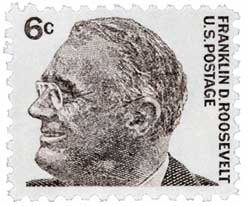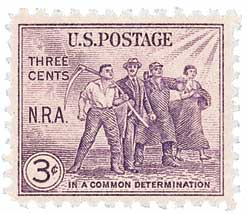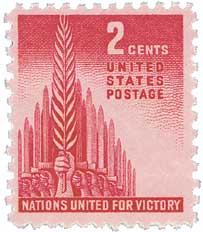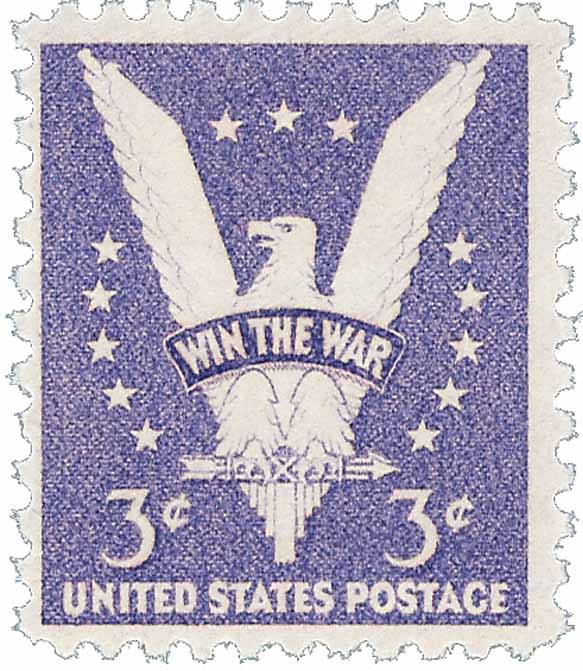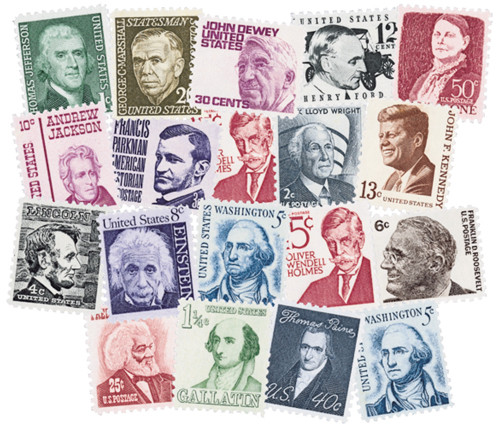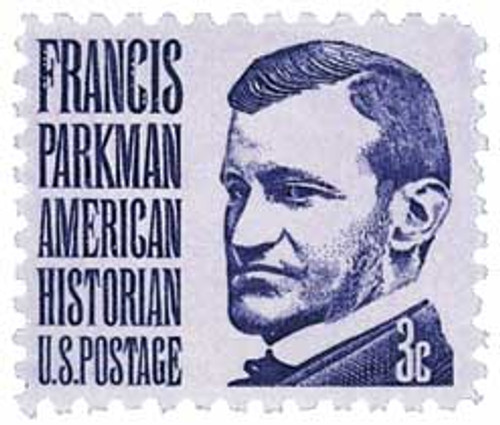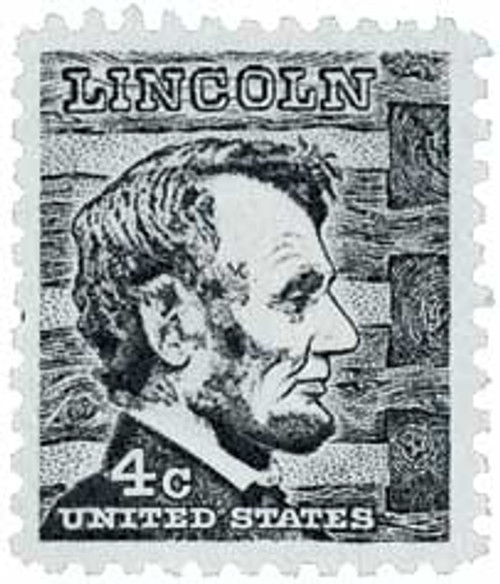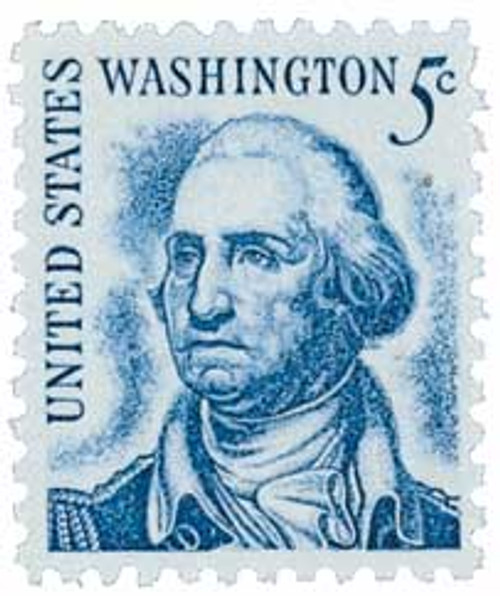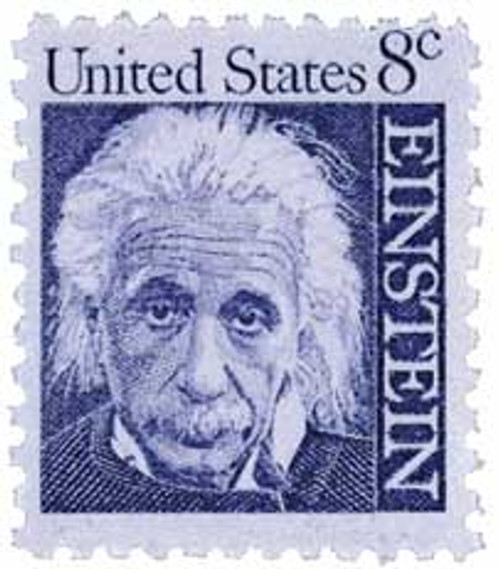
# 1284 - 1966 6c Prominent Americans: Franklin D. Roosevelt
6¢ Franklin D. Roosevelt
Prominent Americans Series
City: Hyde Park, NY
Printed By: Bureau of Engraving and Printing
Printing Method: Rotary press
Perforations: 11 x 10 ½
Color: Gray brown
Birth of Franklin Roosevelt
Sometimes called the stamp-collecting president, Roosevelt began collecting stamps at the age of 8. Roosevelt credited the hobby with helping him learn geography, partial recovery from polio, and managing the stress of being Commander in Chief. Even as war raged, he managed to spend some time with his collection every day. Over time, he built a collection nearly 1 million stamps.
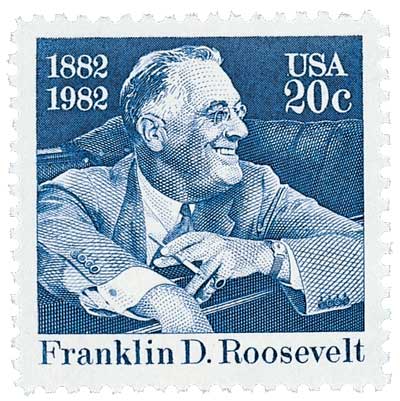
Roosevelt’s four terms in office coincided with two of the most turbulent eras in American history – the Great Depression and the Second World War. As a lifelong stamp collector, Roosevelt was familiar with the tradition of capturing history on postage stamps. He also knew stamps had the power to educate, send important messages, and shape public opinion.
As President, Roosevelt put this knowledge to work, personally approving each of the stamps issued during his 12 years in office. He also made suggestions for stamp subjects and designs. The result is more than 200 US stamps that chronicle US history, reveal the beauty of our most scenic National Parks, and pay tribute to noteworthy Americans.
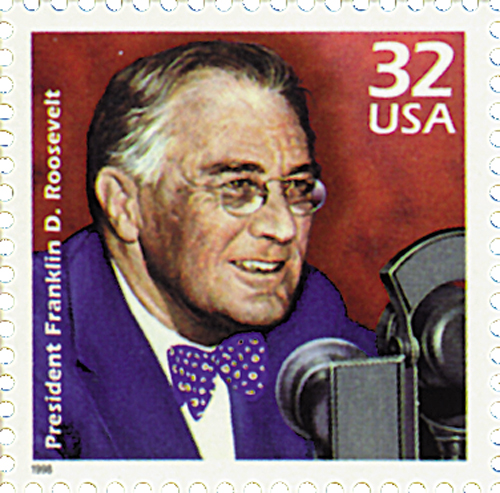
The President’s passion for stamp collecting was well known, and he often received stamps and covers from fellow collectors. Even members of other government agencies saved unusual stamps they received in the mail and sent them to him.
During his campaign, cachets urging “A Stamp Collector for President” were used to promote the hobby in general. Once in office, Post Office Department revenue increased almost annually and membership in stamp organizations grew rapidly. The number of stamp dealers also increased, and department stores across the nation had stamp counters.
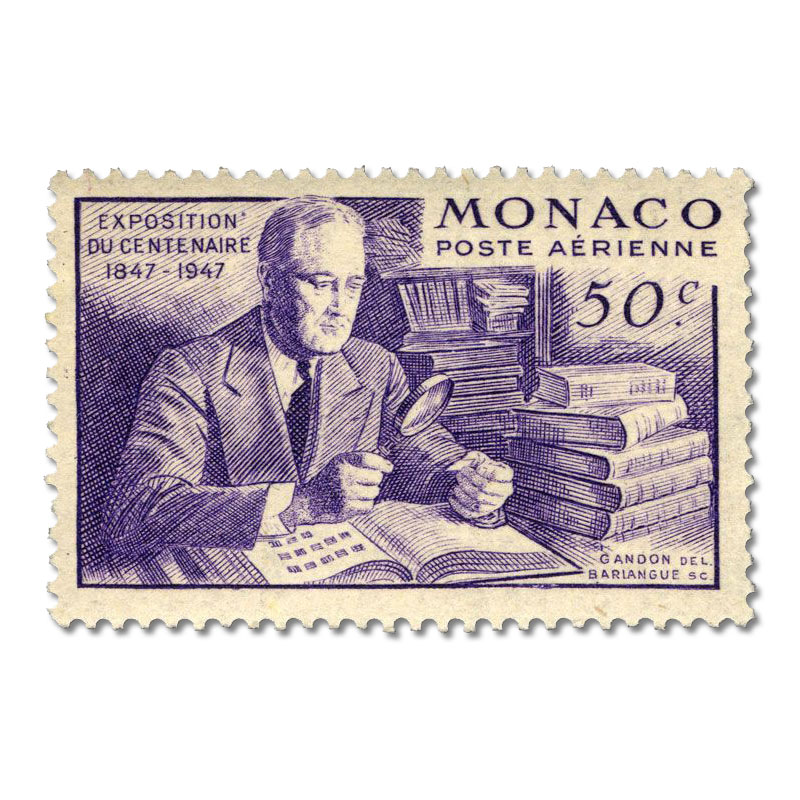
During the course of the war, Roosevelt used US stamps to inspire Americans and send messages of hope around the world. With an eye to the future, FDR avoided picturing displays of US military might. Classics like the Iwo Jima, China Resistance, and Overrun Countries stamps remain collector favorites today. In fact, the last official act Roosevelt performed before his death was approving the design for a postage stamp.
Click on the images below to read about some of the FDR-era stamps that supported his programs and the war effort:
Click here for more stamps honoring FDR.
Click here for a Smithsonian video about FDR’s stamps.
6¢ Franklin D. Roosevelt
Prominent Americans Series
City: Hyde Park, NY
Printed By: Bureau of Engraving and Printing
Printing Method: Rotary press
Perforations: 11 x 10 ½
Color: Gray brown
Birth of Franklin Roosevelt
Sometimes called the stamp-collecting president, Roosevelt began collecting stamps at the age of 8. Roosevelt credited the hobby with helping him learn geography, partial recovery from polio, and managing the stress of being Commander in Chief. Even as war raged, he managed to spend some time with his collection every day. Over time, he built a collection nearly 1 million stamps.

Roosevelt’s four terms in office coincided with two of the most turbulent eras in American history – the Great Depression and the Second World War. As a lifelong stamp collector, Roosevelt was familiar with the tradition of capturing history on postage stamps. He also knew stamps had the power to educate, send important messages, and shape public opinion.
As President, Roosevelt put this knowledge to work, personally approving each of the stamps issued during his 12 years in office. He also made suggestions for stamp subjects and designs. The result is more than 200 US stamps that chronicle US history, reveal the beauty of our most scenic National Parks, and pay tribute to noteworthy Americans.

The President’s passion for stamp collecting was well known, and he often received stamps and covers from fellow collectors. Even members of other government agencies saved unusual stamps they received in the mail and sent them to him.
During his campaign, cachets urging “A Stamp Collector for President” were used to promote the hobby in general. Once in office, Post Office Department revenue increased almost annually and membership in stamp organizations grew rapidly. The number of stamp dealers also increased, and department stores across the nation had stamp counters.

During the course of the war, Roosevelt used US stamps to inspire Americans and send messages of hope around the world. With an eye to the future, FDR avoided picturing displays of US military might. Classics like the Iwo Jima, China Resistance, and Overrun Countries stamps remain collector favorites today. In fact, the last official act Roosevelt performed before his death was approving the design for a postage stamp.
Click on the images below to read about some of the FDR-era stamps that supported his programs and the war effort:
Click here for more stamps honoring FDR.
Click here for a Smithsonian video about FDR’s stamps.











